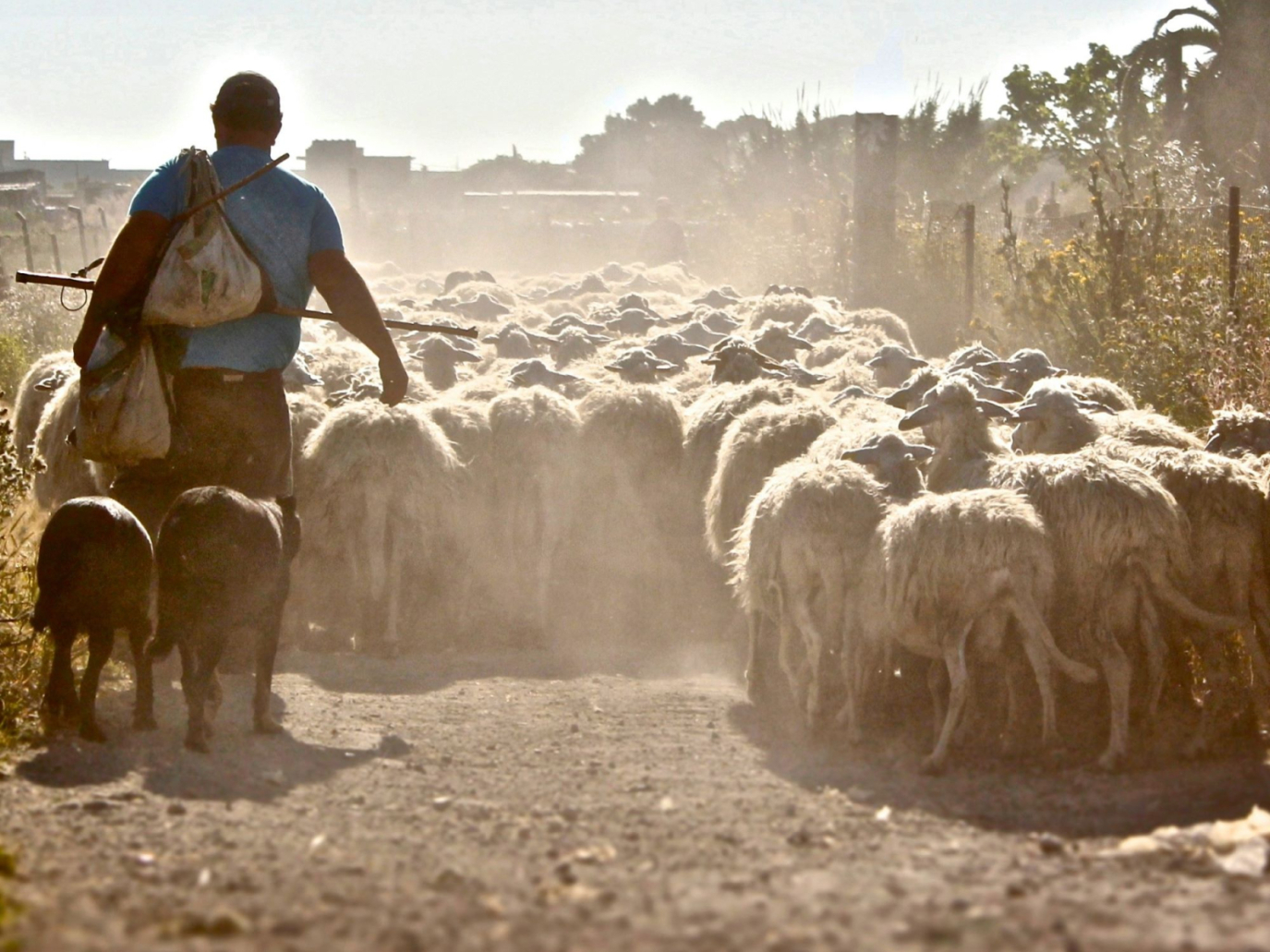Livestocks drink mud, lakes dry up, grain and forage harvests are down to zero. These are the shocking images coming recently from Sicily, in the midst of a drought emergency. These hardships are bringing breeders and farmers to their knees all over the region and will soon cascade over the whole community. Particularly hit are the provinces of Agrigento, Caltanissetta, Enna, Palermo and Trapani. And, to a lesser extent, those of Messina, Catania, Ragusa and Syracuse. What’s happening and what actions are being implemented against the effects of the climate crisis in Sicily?
A predictable emergency
On 6 May, the Council of Ministers declared a national state of emergency for a duration of 12 months due to the drought in Sicily. This resulted in an initial allocation of 20 million euros for the region, with a promise to increase resources during the implementation of the first measures to combat the crisis. Prior to that, on 9 February, the president of the Sicilian region, Renato Schifani, had already declared a state of natural disaster over the entire territory, where rainfall had been scarce since the autumn of 2023 and higher-than-average temperatures had reduced surface water flows and drained the aquifers.
While the recent gaffe of the Minister of Agriculture and Food Sovereignty, Francesco Lollobrigida still rings in the ears of Sicilians (“Fortunately, this year the drought has affected some areas of the South and Sicily in particular but much less other parts of the country”, he declared), it is worth asking whether we can really call this situation a calamity or an unexpected emergency in the eyes of the state.
The drought was not only foreseeable but had already been predicted and denounced by the local population during the autumn and winter seasons, due to almost zero rainfall and high temperatures. A situation that would inevitably precipitate with the summer (which on the island generally causes the thermometer to fluctuate between 30° and 40°C) and that the 20 million currently on the table will not even begin to buffer.
The lack of rain is only one side of the coin of Sicily’s drought. The other major problem is years of lack of structural work on reservoirs and water networks, including incomplete dams and structures so dilapidated and in disrepair that they are regularly referred to as ‘colander’ water infrastructures. According to ISTAT, in 2022, in Sicily, water loss during introduction of water into the network for authorised uses was 51.6%, equivalent to a volume of 339.7 million cubic metres of wasted water. Adding to this is the lack of any effective plans to secure supplies for the areas most at risk.
"Now the reservoirs are dry, agriculture is at the brink and tourism risks a lethal blow” reads a social media post by MP Giuseppe Provenzano. "Above all, citizens have been going through water rationing for months and it’s becoming increasingly unsustainable. The use of privately owned tankers encourages unregulated speculation and with what level of sanitary control? In some areas, between Agrigento and Caltanissetta, in particular, the little water that arrives, when it does arrive, is not drinkable. A disgrace in 2024 Italy, with potentially dramatic consequences on people's health, for which someone could be held accountable.”
Dried-up lakes
On 26 June, Legambiente made official the disappearance of Lake Pergusa, in the province of Enna, due to the total desertification of its bed. This is the latest news on the state of lakes in Sicily in these weeks of crisis. Lake Pergusa was the only natural reservoir on the island, an oasis that had been promoted to Site of Community Importance by the European Union for its geological and faunistic relevance, as it was a major staging post for numerous species of birds migrating from Africa to Europe every year.
Lake Pergusa is joined by many other reservoirs reduced to puddles and mud slicks. All regional reservoirs are under pressure and the consequences are severe on several fronts. Lake Disueri, in the municipality of Gela, in the province of Caltanissetta, is almost dry. Lake Fanaco in Palermo, the lake formed by the Nicoletti dam downstream of Enna, Lake Ogliastro and Lake Pozzillo in the Catania area, the Rosamarina reservoir in Palermo, and many others have also been cause of concern for months. These are water reservoirs from which to draw water to irrigate the fields, quench the thirst of the local fauna and livestock and, no less importantly, refill the water bags of the forest rangers in the event of fires, which are numerous at this time of year.
Drought brings Sicilian agriculture on its knees
These days, more and more farmers are slaughtering their animals because they do not know how to feed them or quench their thirst. Without water, the livestock farms that can afford it are resorting to private tankers so as not to see their livestock die, in many cases having to deal with uncontrolled speculation.
All over Italy, people were shocked to see photos of goats in the Caltanissetta area, in the Chiapparia district, that, without access to other sources in a radius of kilometres, were forced to drink mud, which is what’s left of the small water basin from which farmers and wildlife alike used to get their supplies
In addition to thirst, there is also hunger, with fodder harvests to feed livestock reduced to zero. Coldiretti responded to the emergency shortly after mid-June, with a support intervention that brought one and a half million kilos of hay with alfalfa pellets to Sicily. On 19 June, the region allocated 10 million euro that will be used to issue forage bonuses. These are vouchers to buy hay from approved suppliers, which will replace the green pasture grass that never emerged from the parched land.
For farmers, too, the situation is as complex as ever. In the area of the Catania plain, where citrus fruits and PGI blood oranges are grown, some farms are choosing to uproot part of the citrus groves, forced to choose which plants to feed and which not, while the cost of water supply per hour is soaring.
In the Madonie area, one of the hardest hit by the lack of rain, the wheat and fodder harvest is at zero. Hundreds of hectares of land are almost totally barren, fields are empty of ears of corn, impossible to threshed. Here, after investing several thousand euros, local entrepreneurs and companies will collect nothing this year, risking closure. According to the accounts of many of them, they have never seen such a bad year. It is the beginning of a domino effect of economic losses throughout the territory.
Desalinators: is the answer in the sea water?
The 20 million water emergency plan announced by the Sicilian region currently provides for 138 interventions to promote water supply, including the construction of new wells, the revamping and restoration of existing wells, the construction of bypasses and connecting pipelines, and the upgrading of lifting and pumping systems. In addition, just over 2 million euro, co-financed by the state and region, will be allocated to the purchase of eight new tankers and the repair of 78 others scattered throughout the territory.
Also part of this strategy are the 90 million euro earmarked in the FSC 2021-2027 agreement for the reactivation of three desalination plants in Trapani, Gela, and Porto Empedocle. Plants that suck in salt water from the sea, filter it and extract fresh water to be fed into the water network. A reactivation that is anything but simple if we consider that these plants have been abandoned for at least a decade, all three having been decommissioned between 2014 and 2012. They are decaying structures, with old technology for filtering and pumping seawater and corroded tanks, the maintenance of which will require months of work. In the case of the Porto Emedocle desalinator, for example, it is estimated that at least five months of work will be needed before it can be made operational. The solution, therefore, could be a long-term one for future water crises, but today it does not respond to the urgent need for immediate aid.
Drought in Sicily puts tourism and health at risk
Meanwhile, alarms and possible new inconveniences are beginning to come from the rest of the Sicilian community. While many municipalities have been reckoning for months with the rationing of water supply for city activities, on the health front, preventive action is already beginning to be taken to ensure the continuous supply to medical facilities such as dialysis centres. There are about 80 centres that provide life-saving treatment for 4,000 patients and have a large water consumption (up to a thousand litres per patient per dialysis session).
Tourism, another major economic engine of the island is now at risk and remains an enigma. Hoteliers, in fact, foresee a wave of cancellations, as is already happening in the province of Agrigento, one of the most important tourist catalysts for its world heritage archeological sites.
This article is also available in Italian / Questo articolo è disponibile anche in italiano
Cover image: Joe Pregadio, Unsplash



